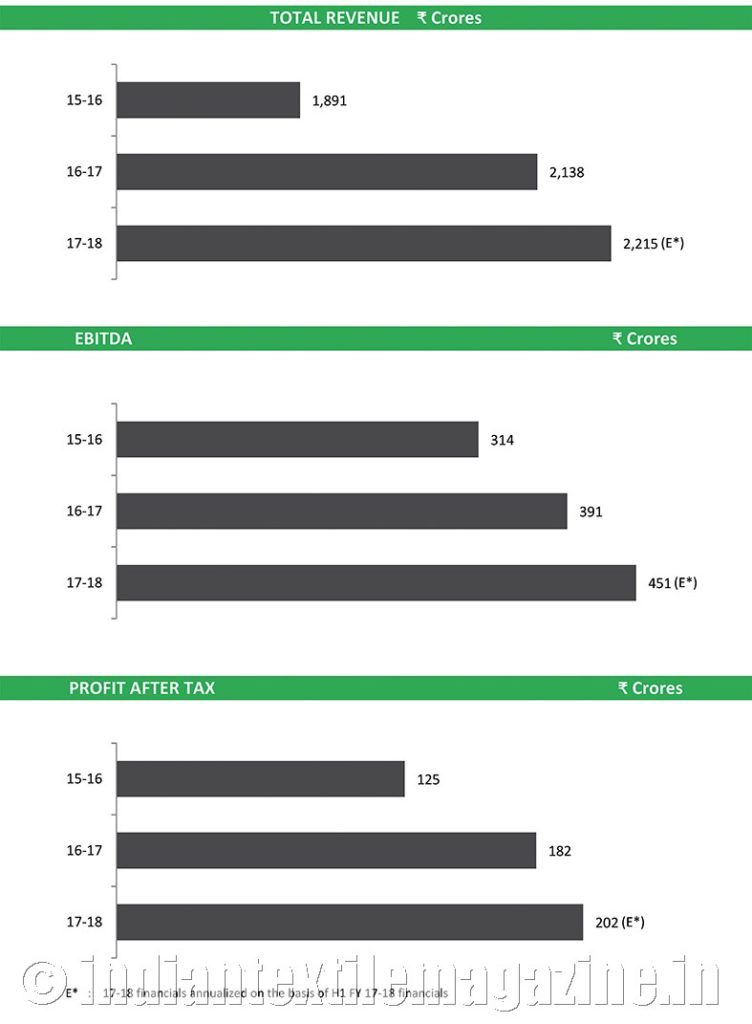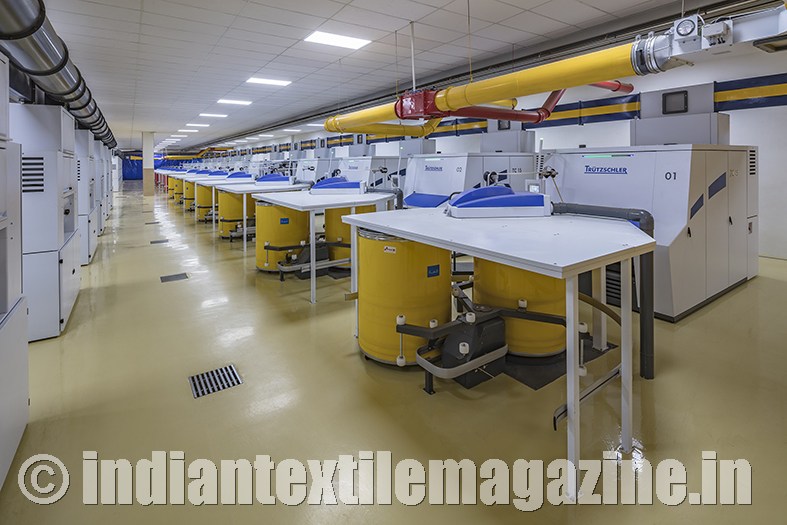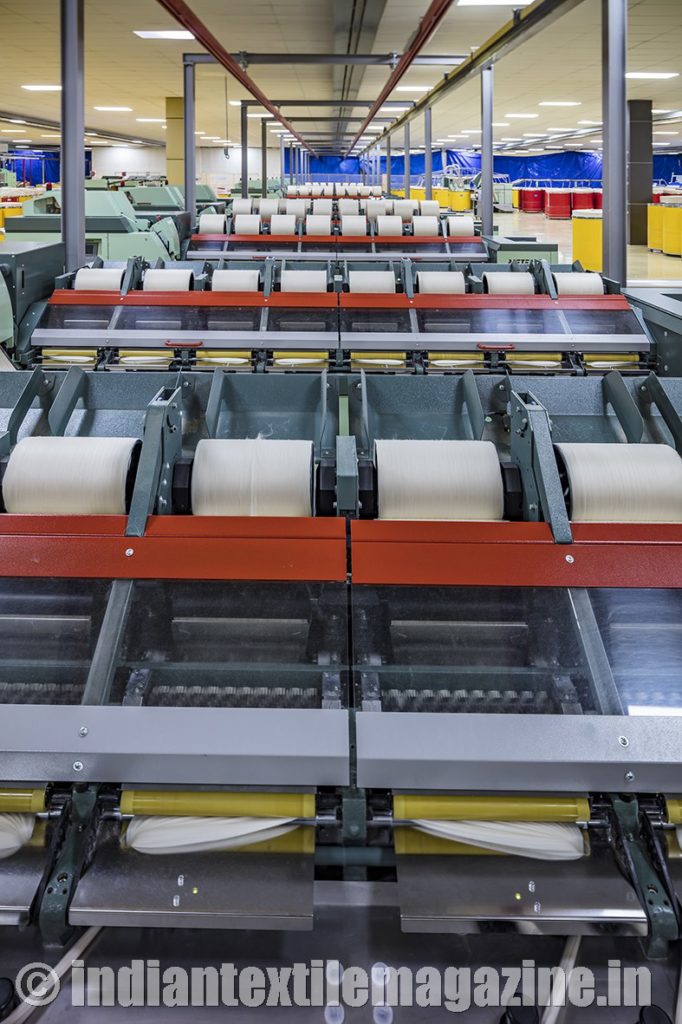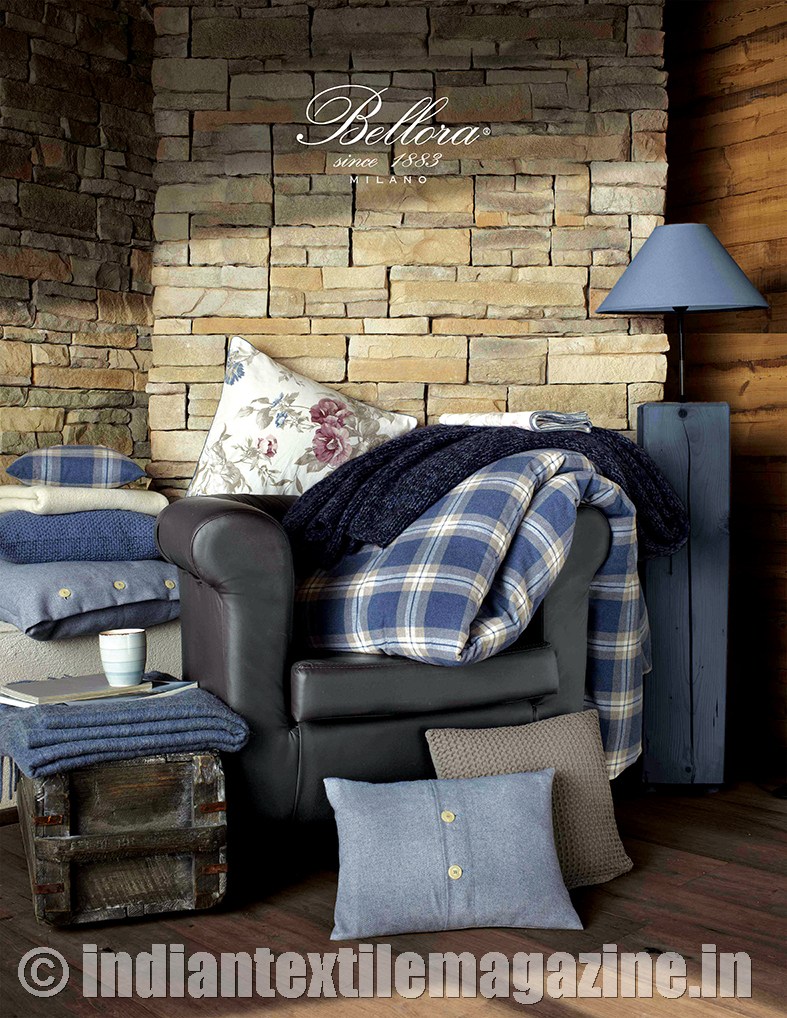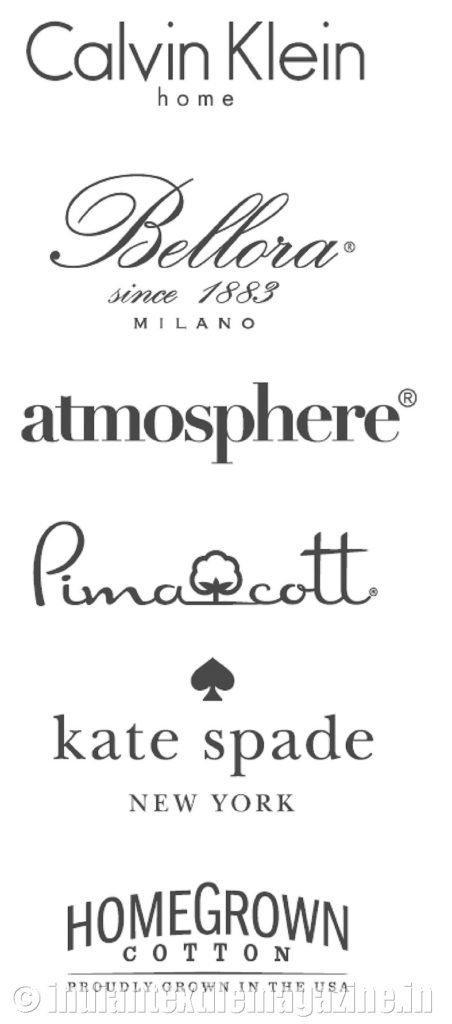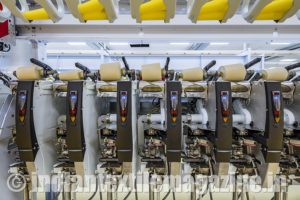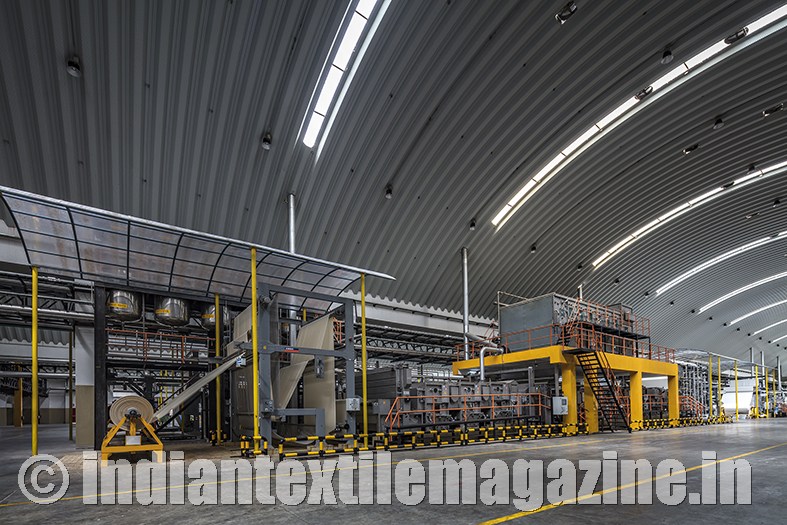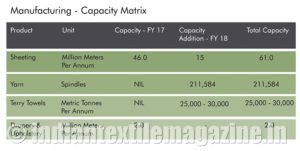Investing in sustainable manufacturing solutions
The textile industry never ceases to amaze. Just when you think you have seen the best, you come across something that leaves you awestruck. Take Himatsingka Group’s campus at Hassan for example. It is world class in the true sense of the word. Everything from the sweeping landscape, the ambience, the culture, the sheer scale and the state-of-the-art technology used in the manufacturing process makes the campus a symbol of pride for the Indian textile manufacturing industry.
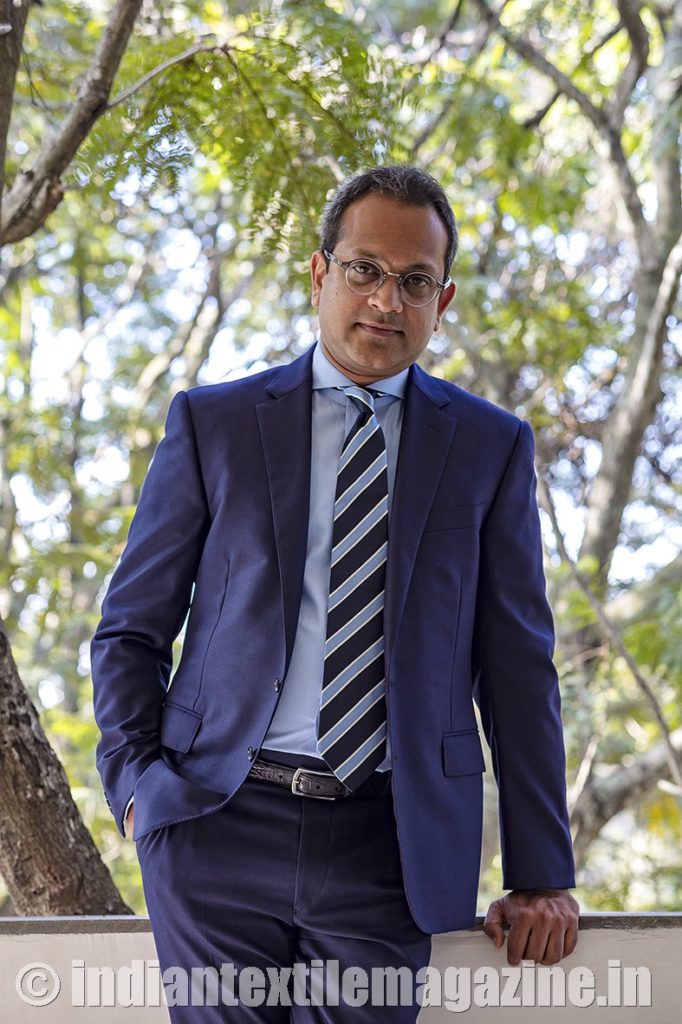
The Rs. 3,000 crore Himatsingka Group is a vertically integrated home textile major with a global footprint. It focuses on the manufacture, retail and distribution of home textile products. The Group operates amongst the largest capacities in the world for Bedding products, Drapery & Upholstery fabrics and fine count cotton yarn and will shortly add to its portfolio the largest capacities for Terry Towels. With over 6,000 people, the Group continues to expand its reach and build capacities in the home textile space.
The Himatsingka Group has carved a niche for itself in home textiles, not by treading old beaten paths but by taking on risks and challenges that have elevated it to be amongst the most advanced textile companies the world. It has set new standards in creating integrated models, embracing technology, building plants of global scale and ushering in next-generation shop floor culture.
It is an exciting phase of growth for the Group. Under the keen acumen and foresight of its Managing Director & Group CEO, Mr. Shrikant Himatsingka, the company has cemented its position across global markets. It has been in an expansion mode and the construction of what is going to be the world’s largest Spinning unit under one roof is on in full swing and is expected to be completed in another few months. Work on the proposed terry towel unit is expected to start shortly. The company has just completed its brownfield expansion of its Sheeting unit.
The Group has also taken commendable steps to strengthen its brand portfolio. While Himatsingka has iconic fashion brands like Calvin Klein Home and Kate Spade, it also has famous luxury brands like Bellora and Atmosphere as part of its brand portfolio.
In addition, the Group has emerged as a global leader in Track & Trace capabilities with regard to the cotton value chain. With exclusive global rights to the patented DNA tagging technology, Himatsingka has an edge in bringing ‘Track & Trace’ solutions to its clients. The company’s exclusive cotton brands, namely, Pimacott, HomeGrown Cotton and Organicott, will be focused on catering to the client requirements, where products will be equipped with the DNA-based tagging technology.
Himatsingka is positioning its manufacturing assets to be among the top three in their respective verticals. This ensures the company’s ability to be a reliable global force in the home textile space.
The growth story of the Group is not just based on technology, brands and the scale of the projects alone. It is also a story about how the Group has, through its path-breaking HR initiatives, been able to bring a positive change to communities around the Group’s plants. It’s a story that has been driven by adherence to certain key values and culture systems.
In an exclusive interview, Mr. Shrikant Himatsingka, Managing Director & Group CEO, spoke at length on the Group’s initial days, the focus on advanced manufacturing capabilities, building sustainable Intellectual Property platforms, future plans and his take on certain key issues affecting the textile industry.
Here are the edited excerpts of the interview.
We began by asking Mr Himatsingka about the initial days of the Group.
“Himatsingka Seide was founded in 1986 by my father Mr. Dinesh Himatsingka, Executive Chairman of the Group. At that time, he witnessed the advanced capabilities that European manufacturers brought to the table and believed that India could be equally innovative and capable of producing such products. This belief led to the formation of ‘Himatsingka Seide’, a pioneering venture that saw the setting up of the first vertically integrated plant of its kind that manufactured luxury Drapery & Upholstery fabrics for international markets. The plant began commercial production in 1988. ‘Seide’ is the German word for silk, and initially most of our products were manufactured using silk. In fact, a lot of people still associate us with silk because of our earlier history,” Mr. Himatsingka quipped on the Group’s first plant established at Doddaballapur, near Bangalore.
“After the plant commenced production in 1988, it was obviously a tough journey. India was largely known for its commoditized products, and it took the company around 3-4 years of trouble-shooting, trials and research to discover the nuances of the know-how required for producing uber luxury Upholstery and Drapery fabrics. After this initial period, the company began to demonstrate strong growth for its time and focused on serving the American and European markets. The company crossed the Rs 100 crore mark in the year 1999-2000,” he added.
Continuing further he said: “While the revenues were over Rs. 100 crores, the profit after tax was Rs.40 crores in 1999-2000. The margins were the highest in the textile industry. Product design was the key to this value addition that made these numbers possible. We had strong product design and innovation capabilities that led to our products being successfully placed with the most discerning luxury brands across the world. The shop floor was extremely complex for its time, capable of handling over 20,000 SKUs across small batches of production. In fact, Himatsingka was the first company to set up a luxury Drapery & Upholstery plant of its time. It was the first plant in the country to be heavily jacquard oriented. It was the first to set up CAD/CAM manufacturing systems for design way back in the early 1990s. Himatsingka is also credited with the distinction of being the first to bring in velvet know-how and the first to use multi-fiber platform for value-added products in India.”
Describing the first decade of the company, Mr. Himatsingka stated: “My father’s pioneering efforts were inspirational to many in the textile industry. He created a ‘Rolls Royce’ in the luxury textile space, which gave the company a strong platform and foundation on which we could grow.”
Embarking on new initiatives
It was around this time in 2001 that Mr. Shrikant Himatsingka joined the family business after completing his graduation from the Stern School of Business at New York University. For the first couple of years he got trained on the shop floor to get a ground-level understanding of the business. Interestingly, the first project that he launched was ‘Atmosphere’, the company’s luxury retail brand.
Recalling the reason behind entering the retail domain, Mr. Himatsingka observed: “Our strategy was quite simple. We didn’t have a market presence in India and we wanted to sell here. So the challenge was, who do you sell to? When you sold it to multi-brand outlets, there was a chance of the image of the products and brands taking a beating. So we set up ‘Atmosphere’, a luxury Drapery & Upholstery retail brand as a forward integration initiative in order to create our own consumer experience.”
According to Mr. Himatsingka, the Group’s foray into retail was in a way ahead of its times and came with its own set of challenges. “It’s not easy to scale at the luxury end of the market. So, while we were growing that business, by 2005 we were looking for businesses that were more scalable. We wanted to be a global player in the home textile space and therefore needed to do something substantial to make a mark on the global map. It was at that time that we conceived the Hassan plant and made a foray into the Bedding space, both on the manufacturing and distribution fronts.”
First phase of growth
Construction of the Hassan plant commenced in 2005 and was commissioned for commercial production in 2007. Looking back at that period, Mr. Himatsingka said: “Obviously, it was an ambitious and large project for us. By that time, we had also realized the merits of forward integration and, therefore, simultaneously we started looking for acquisitions to tap into markets that we wanted to address.”
Throwing light on how the company went about the acquisition process, Mr. Himatsingka remarked: “The Group was looking for opportunities that would give it a strong platform in key markets and had credible intellectual property portfolios coupled with strong client relationships on the private label front. We made three back-to-back acquisitions in 2007, which gave us a foothold in North America and Europe.”
The tough phase
During 2007 the company had invested over Rs.1,000 crores in its new facilities and acquisitions. While the initiatives would enable the company to leapfrog into an entity seven times its size at that time, challenges were just around the corner. “From 2007 to 2012, I faced some of the toughest times at work. Not only did we have to face challenges of stabilizing the new facilities and integrating our new acquisitions, we were also faced with serious challenges on the external front. We had the global economic slowdown in 2008. We had extreme foreign exchange volatility during this period, and in 2010-11 we also faced the problem of hyperinflation in raw material prices. All this put together took a toll on us. Everything that could go wrong went wrong. Our business model was put to the test. Our management and our operational & strategic capabilities were put to test. We needed a good four years to find our feet.”
Mr. Himatsingka was quick to point out that this tough phase was also the time that gave him deep insights and learning that would help him in the future. “It was an extremely rich phase in terms of experience. There were different breeds of difficulties to face. I learnt a lot about how to handle scale, adversity and building global capabilities. If I hadn’t been slapped by circumstances then, the growth trajectory of the Group would not have been as buoyant perhaps,” he added.
Mr. Himatsingka remained confident that the challenges would be overcome and brighter days were ahead. “Every stakeholder (rightly so) thought that our future was bleak. However, we remained resilient and focused. We were confident of our model. With high quality brands, world-class infrastructure, a committed and competent team and a strong will, we had the ingredients to face the challenges.”
Pretty soon the Group’s fortunes took a turn for the better. There has been no looking back ever since. Himatsingka crossed the Rs.1000-crore level in revenue in 2009-10 and the Rs. 2000-crore mark in 2014-15. “The Group has continued to consolidate its position since, and has now embarked on its next phase of expansion.” said Mr. Himatsingka.
Track and trace capabilities
Himatsingka is the world’s first company to bring to market the DNA-based tagging technology to ensure complete ‘Track and Trace’ capability across the cotton value chain. “This DNA technology, developed by Applied DNA Sciences (ADNAS), is exclusive to the Himatsingka Group,” said Mr. Himatsingka. “Our exclusive brands – Pimacott, Organicott and HomeGrown Cotton – are now equipped with the DNA-tagged technology. Our aim is to play a responsible role in providing the highest standards of supply chain security and integrity for our discerning clientele. With this capability, we have emerged to be global leaders in Track & Trace capabilities for the cotton value chain.”
US & European markets
The global home textile market was estimated at approximately $96 billion in 2016, and it is expected to reach $131.5 billion by 2020, growing at CAGR of 3.5%. The US textiles and apparel market was estimated to be $175 billion in 2016. The US imported $2.6 billion worth of cotton-based Bedding products primarily from India, China and Pakistan, in 2016. This contributed to 87% of the total cotton-based Bedding products imports. The US has increased its sourcing of cotton sheets, pillow cases, bed spreads and quilts from India over the years making it the largest supplier of cotton Bedding products to the US. For Himatsingka, the US continued to be the largest market with a revenue contribution of more than 80%.
The company’s consolidated revenues stood at Rs 2,138 crores for the financial year 2016-17 and revenues from brands crossed the Rs 1,200 mark during the same period. While the Group has always had a strong focus on the US market, what about its presence in Europe? Replying to this question, Mr. Himatsingka pointed out that they already had their European presence through the Bellora subsidiary. Adding further he said: “We have now embarked on a renewed goal for Europe. Our recently incorporated Himatsingka Europe, a 100% subsidiary will drive focus on growing our presence in the EU and the UK. We have a new CEO for Europe who is now leading our initiatives to expand across continental Europe.”
India on the radar
Asked about the growing Indian domestic market, after Atmosphere – the company seems to have not come out with any India-specific initiatives – Mr. Himatsingka was frank enough to agree that while the company could have done a lot in India it had not. Elaborating further on the subject he said: “Does India hold promise for large-textile companies? Yes. Is it a difficult market to crack? Again, yes. I agree we are probably behind competition when it comes to the Indian market. We have not taken the right strides. While we have taken some initiatives in the Drapery & Upholstery segments, we haven’t made meaningful progress on the Bedding and bathing front.”
Mr. Himatsingka was however non-committal when it came to setting any particular time frame for implementation of any specific plans for the Indian market. “The Indian market remains important and our initiatives and strategies for the market are work in progress,” he pointed out.
New manufacturing facilities
The global manufacturing landscape has been inundated with technology platforms and opportunities that will pave the way for next-generation shopfloors and usher in a new manufacturing culture. The textile industry is no exception. Himatsingka has been exploring technology that may have transformational impact on productivity and efficiency. The company is leveraging automation and virtual platforms that radically alter manufacturing. “We are in the midst of expanding capacities and committed to investing to the tune of Rs. 1500 crores in our Sheeting, Spinning and Terry Towel facilities,” Mr. Himatsingka disclosed.
These themes are especially important, given the emphasis on making India a global manufacturing hub. Himatsingka believes that a combination of technology and scale in the textile sector will be essential to scale India’s share of the global textile trade. Himatsingka has invested in the best global manufacturing technology, from Spinning to weaving, dyeing, processing, finishing and, more importantly, the ZLD ETP plant which ensures zero discharge.
Terry towels business
As mentioned earlier, the company is planning to set up a manufacturing facility exclusively for terry towels in Hassan, Karnataka. The new facility construction of which will start next year, will have an installed capacity of 25,000 – 30,000 tonnes per annum (TPA). When queried as to how does terry fit in with the company’s existing business, Mr. Himatsingka replied stating that the foray into terry is very synergetic as the company can offer complete solutions for Bedding & bath products at the global level.
World’s largest Spinning unit
Ever since the day it was announced, the Himatsingka Group’s new Spinning unit with an installed capacity of 2,11,584 spindles has been among the most anticipated projects in the Indian textile industry. “We are setting up the world’s largest cotton Spinning plant under one roof,” said Mr Himatsingka.
The state -of-the-art facility is expected to be commissioned in Q3 FY 18. The fact that India has got excess Spinning capacity did not make any difference to the Group’s plan to set up this pathbreaking plant. Pointing out the reason why Mr. Himatsingka highlighted the fact that the unit was more for captive consumption. “The need for a Spinning plant was driven by backward integration. We are insulated from the Indian demand and supply scenario because we are setting up the plant focused on backward integration. As you know we are large consumers of Ultra-Fine Count Yarn, capacities of which are very restricted in India. So it makes business sense for us to have our own capacities.”
Would Himatsingka be looking at selling yarn manufactured from the plant at some point in time? Answering this query Mr. Himatsingka said: “If at all we decide to sell fine count yarn to third parties, we won’t be doing it not because of compulsion but because we see an opportunity to sell specialty ultra-fine cotton yarn to certain players. As I mentioned earlier we are looking predominantly from a backward integration perspective.”
Explaining how the Spinning facility is different from others, Mr. Himatsingka remarked: “It is a highly automated plant and we are producing Ultra-Fine Counts. The latest generation of technology does make a difference. Will the return on capital in Spinning be as attractive as in Sheeting? The answer is No. However, the Spinning venture will offer other benefits which are important for us. For example, it will give us capabilities to absorb inflationary shocks. It will also de-risk us on the sourcing front with reasonable financial returns, in line with our hurdle rates.”
Strong focus on sustainability
Environmental pollution is another major issue facing the textile industry. Giving his take on the issue, Mr. Himatsingka said: “We have always been particular about using environment-friendly technologies and practices. We believe in the concept of ‘walk the talk’. It is important to be green. We are conscious of our impact on the environment. That’s why we have implemented technologies such as Zero Liquid Discharge (ZLD), and would continue to be a key focus area.”
Giving his take on the textile industry having a major polluter tag, Mr. Himatsingka said: “The textile industry no doubt generates effluent; it is capable of polluting if not attended to. This is happening because there are a lot of small & medium-sized players spread across India who have poor adherence records on compliances with regard to environment friendly practices. Such units probably do not have a high priority to invest in these areas. Large organizations, however, do not have that option. I feel that there should be no discretion on this issue. You cannot be polluting – period.”
Next stop – $1.1 billion
Mr. Shrikant Himatsingka, Managing Director & Group CEO believes that the Group is headed on the right track. It is now the world’s third largest integrated Sheeting producer. It has just set up the world’s largest Spinning plant under one roof. Himatsingka has embarked on the journey to set up the fourth largest integrated Terry Towel plant. It also operates the world’s 3rd largest plant for manufacturing luxury Drapery & Upholstery products. While the Group has developed scale on the manufacturing front, it also has the largest brand portfolios in the home textile space. “We continue to be focused on cementing a vertically integrated model characterized by seamless integration from Fibre to Shelf,” emphasized Mr. Himatsingka.
On a parting note he said: “Looking at the initiatives being undertaken by the Group, we are confident of reaching our next target of $1 billion in revenues over the next few years.”
By M.K. Prabhakar, K. Gopalakrishnan & Ms. Sanjana Donkar
